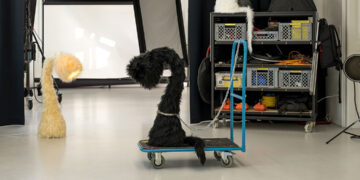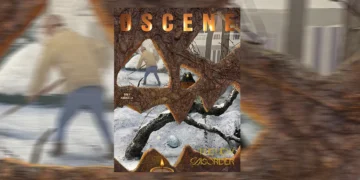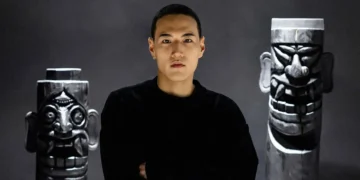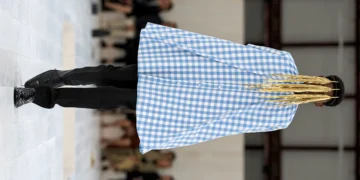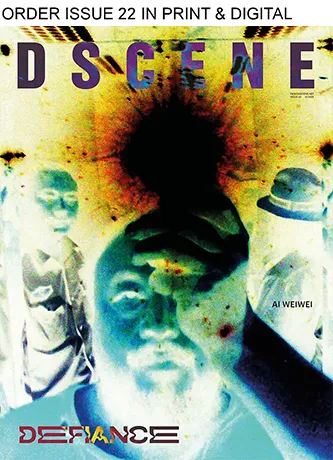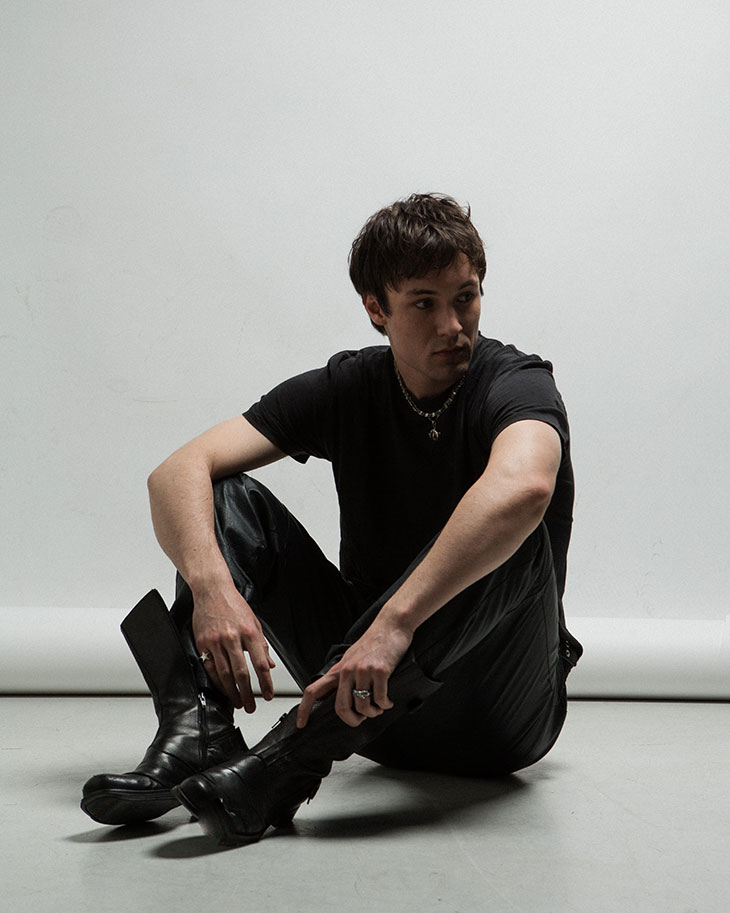
Known for his bold exploration between sculptural beauty and functional pragmatism, Xaver Kuster shares insights into his creative ethos, emphasizing design as a multifaceted relationship between object and observer, beyond mere utility. His narrative weaves through the inspirations behind the unique Fur Lamp series, revealing a deep affection for materials and the unconventional, and highlighting his skillful melding of diverse crafting techniques.
PRE-ORDER IN PRINT and DIGITAL
Kuster sits down with DSCENE Magazine’s Editor Katarina Doric to talk about the emotional landscape evoked by his designs, the relevance of historical design principles to contemporary challenges, and the role of social media in amplifying creative voices.

Images courtesy of the artist
What is your definition of design? – For me, the definition of design can involve solving a problem while also creating a relationship between object and human.
Does design imply the idea of objects that are necessarily useful? – I believe it’s all about the connection you build with an object. This connection can have multiple layers beyond being useful. Some objects give us joy simply by their presence in a room or in some other visual form. Other objects we love because they are super useful, and we enjoy using them. We all have that one seemingly useless or unattractive object that we use every day, yet we still keep it because we’ve used it for so long and it has just always been there. Also this is a form of connection.
What pieces come to mind when you hear “furniture”? – Pieces by Designers of Wiener Werkstätte.

Images courtesy of the artist
What guides your exploration of new shapes and materials in your designs? – At the moment, I enjoy creating objects that challenge or surprise the viewer. I want people to look at my work and find themselves asking more questions than finding answers. I want them to wonder what it is made of and how it was made, or what’s inside. I aim to break away from traditional design typologies and material culture but still keep elements of traditional craft methods.
What inspired the Fur Lamp series? Why did you choose fur as a material? – The FUR LAMP series began with a stage design prop I made from fur. It remained in my apartment for quite a while, and every time I returned home, I found this furry object waiting for me in the corner. Over time, I felt like I developed a connection with this item because it reminded me of the dog I never had. So many designer lamps are super slick, cold, and polished steel objects that lack any personality. The Fur Lamp is the complete opposite. There is something about them that feels lively, like furry creatures, and we tend to build relationships with them. Since then, many new characters have joined the fur lamp series, and it’s so enjoyable to observe how people interact with them.
“I want people to look at my work and find themselves asking more questions than finding answers. I want them to wonder what it is made of and how it was made, or what’s inside.”
Describe the craftsmanship involved in creating each handcrafted Fur Lamp. – Since each piece is handcrafted by me, the silhouette of the lamp is always slightly different and has evolved over time. What I love about this process is its diversity—it involves steelwork, sculpting, upholstery, and assembling all the electronics.
I begin by constructing a steel frame, which provides a basic guideline for the lamp’s shape. Next, I apply a special foam and sculpt it with a knife to achieve the final shape. I particularly enjoy this part of the process because it allows me to witness the transformation of the lamp’s body from a simple block of foam. The last steps involve making patterns, sewing on the fur, and installing the electronics.

Images courtesy of the artist
How important is the viewer’s emotional response to your designs? – I think it’s incredibly valuable to observe how people respond to your work. Often, you can develop tunnel vision when it comes to your own creations. When I exhibited the fur lamp at ALCOVA during Milan Design Week in 2023, it completely changed my perspective on the piece. Some people loved it, some hated it, and some even instantly started to pet it. Some children or dogs were even very scared of it. I would have never thought that this piece could bring up such a wide range of emotions in people.
Do you believe in looking toward the past to design for the future? – I believe that in design, particularly in industrial design, there is a significant responsibility to ensure that things are functional, sustainable, and reliable. I think for the future of design, doing research on new materials, industrial processes, and crafting methods is crucial. However, I also think that certain typologies, materials, and processes from the past have approved for over hundreds of years and continue to make sense today.
Do you consider social media a form of marketing for designers? – There is no doubt that social media can be a super powerful tool for creatives, especially for young designers. You don’t need a gallery, you don’t need management, or you don’t even need an education to get started and and showcase your work.

Images courtesy of the artist
What does sustainability mean to you? – Designers nowadays have a huge responsibility when it comes to sustainability, because it seems like we have to save the world. And that’s not easy for us because previous generations left us with a market flooded with mass-produced products with a very short lifespan, and customers who are accustomed to buying a side table for €9.99. I think it’s great that sustainability has finally become a super important topic, but sometimes I feel like some designers and students build their identity solely on sustainability. As designers, we also have a cultural responsibility. Sustainability alone may save the world, but what’s a world without beautiful furniture?
“Designers nowadays have a huge responsibility when it comes to sustainability, because it seems like we have to save the world.”
What are you working on right now? – At the moment, I’m working on a series of hammer-formed steel plates called the Artifact Plate Series. They can function as decorative collectible artifacts, but at the same time, I also want them to be used. For this Project I’ve collaborated with chefs and food artists, and the results so far have been super interesting.

